La fuga térmica es un fallo en el que se produce una reacción en cadena de sobrecalentamiento incontrolable en una batería de iones de litio.
Se trata de una reacción en cadena poco común pero grave en la que una celda de batería se sobrecalienta de forma incontrolable.
En esta guía, te proporcionaremos el conocimiento claro y directo que necesitas para gestionar tu vida de forma segura y con total tranquilidad.
Tabla de contenido
- ¿Qué es el sobrecalentamiento en una batería de iones de litio?
- ¿Qué causa el sobrecalentamiento en las baterías de iones de litio?
- ¿Cuáles son las señales de alerta de un evento de fuga térmica?
- ¿Qué características de seguridad mitigan el sobrecalentamiento en una batería de calidad?
- ¿Cómo se puede prevenir el sobrecalentamiento en las baterías de iones de litio?
- ¿Qué debo hacer si sospecho que una batería no es segura?
- Concluyendo
- Preguntas frecuentes
¿Qué es el sobrecalentamiento en una batería de iones de litio?
Para comprenderlo de verdad, no necesitamos una densa lección de física. En su lugar, usemos una imagen sencilla que aclare por completo el concepto de un evento de fuga térmica en una batería de iones de litio.
El efecto dominó dentro de tu batería
Imagina una fila de fichas de dominó. Cuando cae la primera, activa la siguiente, que activa la siguiente, y así sucesivamente en una reacción en cadena imparable.
El efecto de fuga térmica es muy similar.
Comienza cuando una sola celda dentro de la batería se vuelve inestable y se sobrecalienta debido a una falla o daño.
Ese intenso calor se transfiere a la célula vecina, provocando que también se vuelva inestable y se sobrecaliente.
Este proceso se propaga en cascada a través de la batería, y cada celda que falla libera más energía y calor, creando un ciclo rápido, autosostenible y peligroso.
Aquí tienes un desglose paso a paso de cómo sucede:
1. El Detonante (La Primera Chispa): Comienza con una falla, generalmente un cortocircuito interno causado por daños físicos o un defecto de fabricación. Este cortocircuito inicial crea un punto caliente localizado.
2. Fusión del separador: Las baterías de iones de litio tienen un separador de polímero muy delgado que impide que los electrodos positivo y negativo se toquen. Cuando el punto caliente inicial alcanza aproximadamente los 130-150 °C, este separador se funde.
3. La reacción en cadena (El fuego desatado): Aquí es donde las cosas escalan rápidamente.
- Cortocircuito masivo: Al desaparecer el separador, los materiales positivos y negativos entran en contacto directo sobre una gran superficie, lo que provoca un flujo masivo de electricidad y un enorme aumento de calor.
- Descomposición química: Este intenso calor provoca la descomposición de los materiales, en particular de los óxidos metálicos del cátodo (el electrodo positivo). Esta descomposición es una potente reacción exotérmica que libera una enorme cantidad de energía adicional en forma de calor.
- Liberación de combustible y oxígeno: Fundamentalmente, esta descomposición química libera gases de hidrocarburos inflamables del electrolito y oxígeno del propio material del cátodo.
La batería se ha convertido ahora en su triángulo de fuego perfecto: proporciona el inmenso calor de la reacción, el combustible del vapor del electrolito y su propio oxígeno.
Debido a que genera su propio oxígeno, puede arder con una temperatura y rapidez increíbles, incluso en espacios cerrados. Es esta violenta descomposición química autoalimentada la que permite que la temperatura se dispare por encima de los 1000 °C (1832 °F).
¿Por qué se produce esta reacción en cadena?
Este "efecto dominó" es lo que los científicos llaman una reacción exotérmica: un proceso que libera una enorme cantidad de energía en forma de calor.
El sobrecalentamiento inicial provoca la avería de los componentes internos de la batería, liberando más energía y, a menudo, gases inflamables, lo que aumenta la presión interna.
Este calor y esta energía son los que provocan el fallo de la siguiente célula.
Esta reacción en cadena no se inicia por sí sola. Necesita un desencadenante, lo que nos lleva a las causas comunes de este fallo.
¿Qué causa el sobrecalentamiento en las baterías de iones de litio?
Analicemos los principales factores que provocan la fuga térmica en las baterías de iones de litio.
El principal culpable: Daños físicos
Una caída fuerte sobre el pavimento o un pinchazo accidental pueden dañar las delicadas estructuras internas de una batería.
Si se rompe la fina capa separadora entre las capas positiva y negativa, puede provocar un cortocircuito interno.
Un cortocircuito es una vía no intencionada de baja resistencia por donde fluye la electricidad, lo que genera una ráfaga de calor rápida e intensa, un punto de partida común para un evento de fuga térmica en una batería de iones de litio.
Factores externos que pueden provocar un evento descontrolado
El riesgo no proviene solo de los daños.
Con frecuencia, el sobrecalentamiento de las baterías de iones de litio sin cortocircuito interno se desencadena por condiciones externas.
Utilizar un cargador barato, no certificado o incompatible puede ser especialmente peligroso.
Es posible que estos cargadores no se detengan cuando la batería esté llena, lo que provocará una sobrecarga.
Este proceso genera un exceso de calor y gas, aumentando la presión dentro de la celda y elevando drásticamente el riesgo de una fuga térmica, lo que provoca un incendio y una explosión de la batería de iones de litio.
Asimismo, la temperatura ambiente puede ser un factor; dejar un dispositivo en un coche caliente puede elevar peligrosamente la temperatura interna de la batería, acelerando las reacciones químicas y degradando sus componentes.
El riesgo oculto: defectos de fabricación
Las inconsistencias en el proceso de fabricación o el uso de materiales impuros en celdas de baja calidad pueden crear defectos internos microscópicos. Estos defectos pueden provocar un cortocircuito con el tiempo.
En EBL, nuestro meticuloso proceso de producción, desde la mezcla de la pasta hasta el ensamblaje de las celdas, está diseñado para eliminar estas inconsistencias y garantizar la integridad y seguridad de cada batería que enviamos.
¿Cuáles son las señales de alerta de un posible evento de fuga térmica?
Por suerte, una batería suele dar señales claras de que algo va mal. Saber qué buscar, oler y sentir es la mejor manera de detectarlo a tiempo.
Señales visuales
La señal de alarma más evidente es la hinchazón o deformación.
Si la batería, ya sea la de un teléfono o un control remoto, se ve hinchada, abultada o con la carcasa deformada, es señal de acumulación interna de gas.
Las fugas son otro indicador crítico de que la integridad de la batería se ha visto comprometida.
Pistas auditivas y olfativas
Tus oídos y tu nariz también son excelentes detectores.
Un silbido o chasquido característico proveniente de un dispositivo puede indicar que se está liberando presión de una celda de la batería.
Esto suele ir acompañado de un olor fuerte, metálico o químico que no es normal.
Si percibes un olor extraño proveniente de tus aparatos electrónicos, confía en tu olfato e investiga.
Advertencias táctiles
Como ya mencionamos anteriormente, el calor es un indicador clave.
Es normal que las baterías se calienten durante un uso intensivo o durante la carga.
Sin embargo, si una batería o un dispositivo se calienta demasiado al tacto, es señal de que está generando calor excesivo y debe desconectarse de la corriente inmediatamente.
Detectar estas señales es bueno, pero elegir una batería diseñada para evitar que se produzcan es aún mejor.
¿Qué características de seguridad mitigan el sobrecalentamiento en una batería de calidad?
Una cosa es reaccionar ante un problema; otra muy distinta es prevenirlo desde el principio. La verdadera seguridad no es un añadido; se diseña desde el primer paso.
El "Protector Silencioso": Sistema de Gestión de Baterías (BMS)
Muchas baterías modernas de iones de litio contienen un pequeño "cerebro inteligente" llamado Sistema de Gestión de Baterías (BMS). Este circuito es el héroe anónimo de la seguridad de las baterías.
- Prevención de sobrecargas y sobredescargas
El BMS monitoriza constantemente el voltaje de la batería y corta la corriente de carga una vez que la celda está llena, evitando así la sobrecarga peligrosa.
También evita la sobredescarga, que puede causar daños irreversibles y comprometer la seguridad de la celda.
- Protección contra cortocircuitos y sobrecalentamiento
Supongamos que el BMS detecta una condición peligrosa, como un cortocircuito o un aumento repentino de temperatura.
En ese caso, puede apagar la batería instantáneamente para evitar desde el principio un sobrecalentamiento descontrolado de la batería de iones de litio.
Prueba de seguridad: Certificaciones
Las baterías de EBL están validadas por expertos independientes. Sometemos nuestros productos a pruebas rigurosas para obtener certificaciones como UL y CE .
Estas normas incluyen pruebas de impacto, sobrecalentamiento y cortocircuitos para garantizar que los productos cumplan con estrictos estándares de seguridad.
Lea también:
¿Son seguras las baterías de iones de litio?
¿Cómo se puede prevenir el sobrecalentamiento en las baterías de iones de litio?
Prevenir el sobrecalentamiento en las baterías de iones de litio se reduce a unos pocos hábitos sencillos e inteligentes. Adoptar estas prácticas es la mejor manera de proteger tus dispositivos y aprovechar al máximo cada carga.
La lista de verificación de carga inteligente
1. Utilice la marcha adecuada:
Utilice siempre el cargador que venía con su dispositivo o un repuesto de alta calidad de una marca de confianza. Un cargador incompatible puede provocar una sobrecarga, un grave riesgo para la seguridad. Los cargadores inteligentes EBL , por ejemplo, incorporan protección para evitarlo.
2. Carga sobre una superficie dura:
Evita cargar tu teléfono, portátil u otros dispositivos sobre superficies inflamables como la cama o el sofá. Una superficie dura y plana como un escritorio permite una mejor disipación del calor.
3. No lo "configure y se olvide":
Aunque nuestros cargadores cuentan con protecciones, es recomendable desconectar los dispositivos una vez que estén completamente cargados para reducir el desgaste de la batería.
Buenas prácticas para el almacenamiento y manipulación de baterías
1. Manténgalos frescos y secos:
El entorno ideal para almacenar baterías es un lugar fresco y seco, sin luz solar directa para ralentizar la degradación química. La alta humedad puede causar corrosión, mientras que el calor excesivo reduce la vida útil de la batería .
2. Evite los revoltijos:
Nunca guardes pilas sueltas en un cajón o bolso con objetos metálicos como llaves o monedas. Esto puede provocar un cortocircuito. Usar un estuche de plástico para pilas es una excelente medida preventiva.
La regla de oro: Nunca uses una batería dañada
Si una batería está hinchada, tiene fugas o está visiblemente dañada de alguna manera, no la utilice.
Incluso una pequeña abolladura puede comprometer la estructura interna de la batería y crear un riesgo para la seguridad.
¿Qué debo hacer si sospecho que una batería no es segura?
Si alguna vez sospecha que una batería está fallando basándose en las señales de advertencia que hemos comentado, mantenga la calma y siga estos sencillos pasos que priorizan la seguridad.
Paso n.° 1: Prioriza tu seguridad
Tu prioridad es evitar lesiones.
No toque una batería o un dispositivo que esté echando humo, siseando o que esté extremadamente caliente.
Desconéctalo de cualquier fuente de alimentación si puedes hacerlo de forma segura sin tocar el dispositivo.
Desalojen la zona de personas y mascotas.
Paso n.º 2: Aislar el dispositivo
Si es seguro mover el dispositivo, utilice pinzas u otras herramientas para colocarlo sobre una superficie no inflamable como hormigón, asfalto o tierra.
Lo ideal es un lugar al aire libre, lejos de cualquier material combustible como madera, papel o hierba seca.
No vierta agua sobre un incendio de baterías de iones de litio, ya que puede reaccionar con el litio y empeorar la situación.
Déjelo que se consuma por sí solo en un lugar seguro y aislado.
Paso n.º 3: Organizar la eliminación adecuada
Una batería de iones de litio defectuosa se considera residuo peligroso y no debe desecharse en la basura común ni en el contenedor de reciclaje.
Una vez que el dispositivo se haya enfriado por completo durante al menos 24 horas, colóquelo en un recipiente con arena o arena para gatos.
Póngase en contacto con su autoridad local de gestión de residuos para obtener instrucciones sobre la eliminación de residuos peligrosos.
Para los usuarios en Estados Unidos, recursos como la página de reciclaje de baterías de la EPA pueden ayudarles a encontrar puntos de eliminación certificados en su área.
Concluyendo
Aunque el tema de la fuga térmica en una batería de iones de litio puede parecer alarmante, la realidad es que se trata de un suceso extremadamente raro. Y lo que es más importante, es altamente prevenible.
La verdadera seguridad de las baterías comienza con nuestra obsesión por la calidad, desde la selección de los mejores materiales hasta la implementación de circuitos de seguridad avanzados como el BMS.
Continúa contigo, el usuario, al adoptar hábitos inteligentes de carga, manipulación y almacenamiento.
Si utiliza sus baterías de forma segura y elige productos de una marca con décadas de experiencia comprobada, podrá alimentar todos los dispositivos de su familia con total confianza.
Preguntas frecuentes
¿Pueden las baterías LiFePO4 sufrir un sobrecalentamiento?
Aunque las baterías LiFePO4 son conocidas por ser mucho más seguras y térmicamente estables que otras químicas de iones de litio, la fuga térmica sigue siendo posible en condiciones extremas como daños físicos graves o una carga inadecuada.
¿Qué tipo de sistema de extinción de incendios es el más adecuado para las fugas térmicas de las baterías de iones de litio?
La única acción segura para un consumidor es evacuar y llamar al 911, ya que usar pequeñas cantidades de agua sobre un incendio de batería es peligroso. Los profesionales capacitados pueden usar grandes volúmenes de agua, no para extinguir el fuego, sino únicamente como refrigerante para detener la reacción en cadena.
¿A qué temperatura dejan de funcionar las baterías de litio?
La mayoría de las baterías de iones de litio para consumidores están diseñadas para funcionar entre -20 °C y 60 °C (-4 °F y 140 °F) , y su rendimiento se degrada significativamente en el extremo frío de ese espectro.
¿Qué se debe hacer si se planea bajar por una escalera un dispositivo averiado con baterías de iones de litio?
Si es necesario mover un dispositivo averiado, debe colocarse en un contenedor ignífugo, como un cubo metálico con arena, para minimizar el riesgo. Sin embargo, la medida más segura es aislar el dispositivo y no moverlo a menos que sea absolutamente necesario.
¿Cómo se evita que explote una batería de iones de litio?
Utilizar un cargador de calidad, evitar daños físicos y nunca utilizar una batería que ya esté hinchada o dañada.
¿Cuál es la diferencia entre una fuga térmica y un incendio de batería?
La fuga térmica es una reacción química interna e incontrolada que produce un calor inmenso. Un incendio en una batería es el resultado externo de esa reacción, donde los materiales inflamables se encienden debido a la temperatura extrema.
¿Cuál es otro nombre para la fuga térmica?
Si bien "descontrol térmico" es el término técnico estándar, a menudo se describe como una "reacción en cadena de sobrecalentamiento incontrolable" o un "evento térmico".
¿Cuál es la principal causa de explosión de las baterías de iones de litio?
Las causas más significativas suelen ser daños físicos graves que provocan un cortocircuito interno, defectos críticos de fabricación o una carga incorrecta con un cargador no certificado o inadecuado.
¿Necesita ventilación una batería de litio?
Sí, las baterías necesitan ventilación para disipar el calor durante la carga y descarga, y la ventilación de la propia batería debe mantenerse despejada para permitir la liberación segura de gases en caso de fallo.

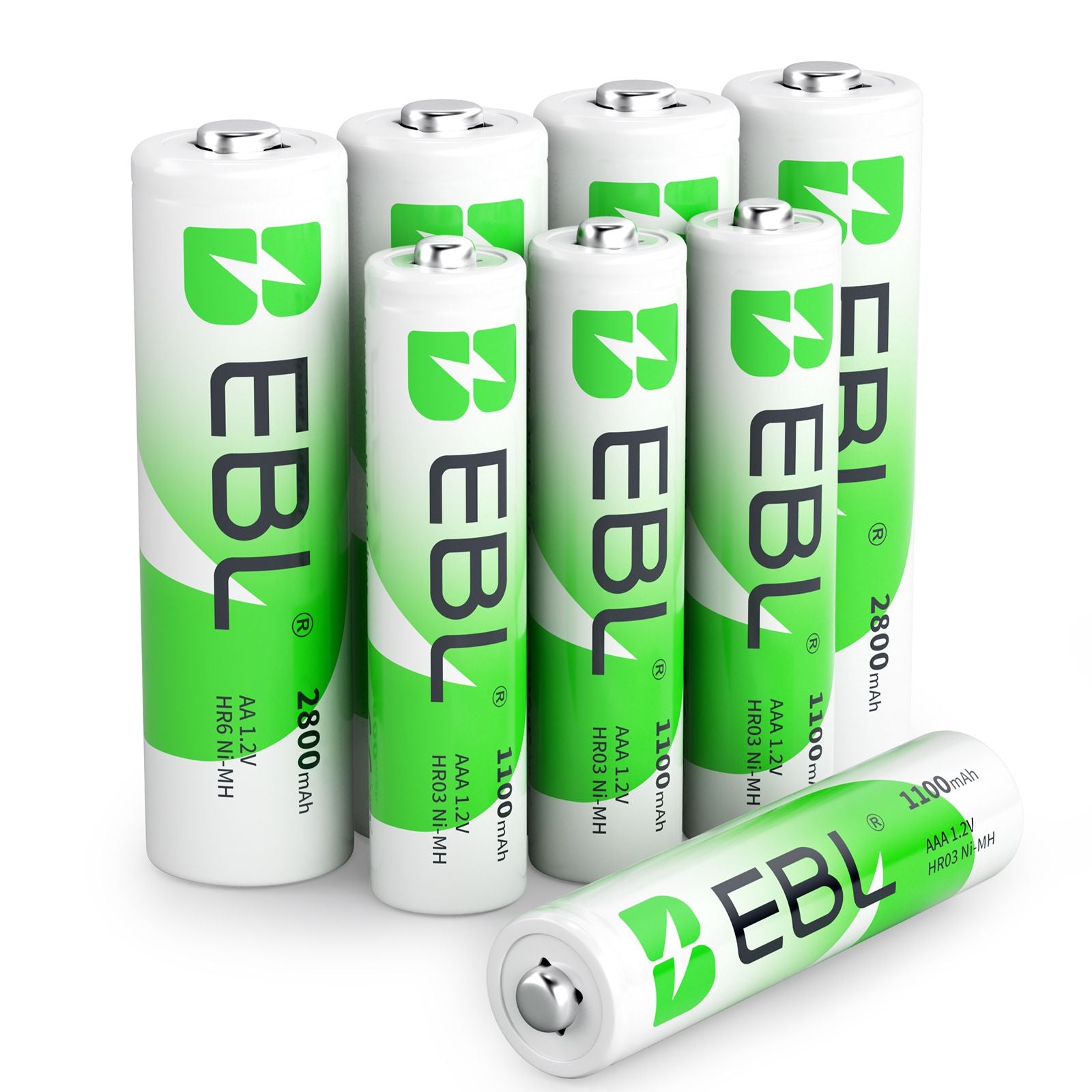

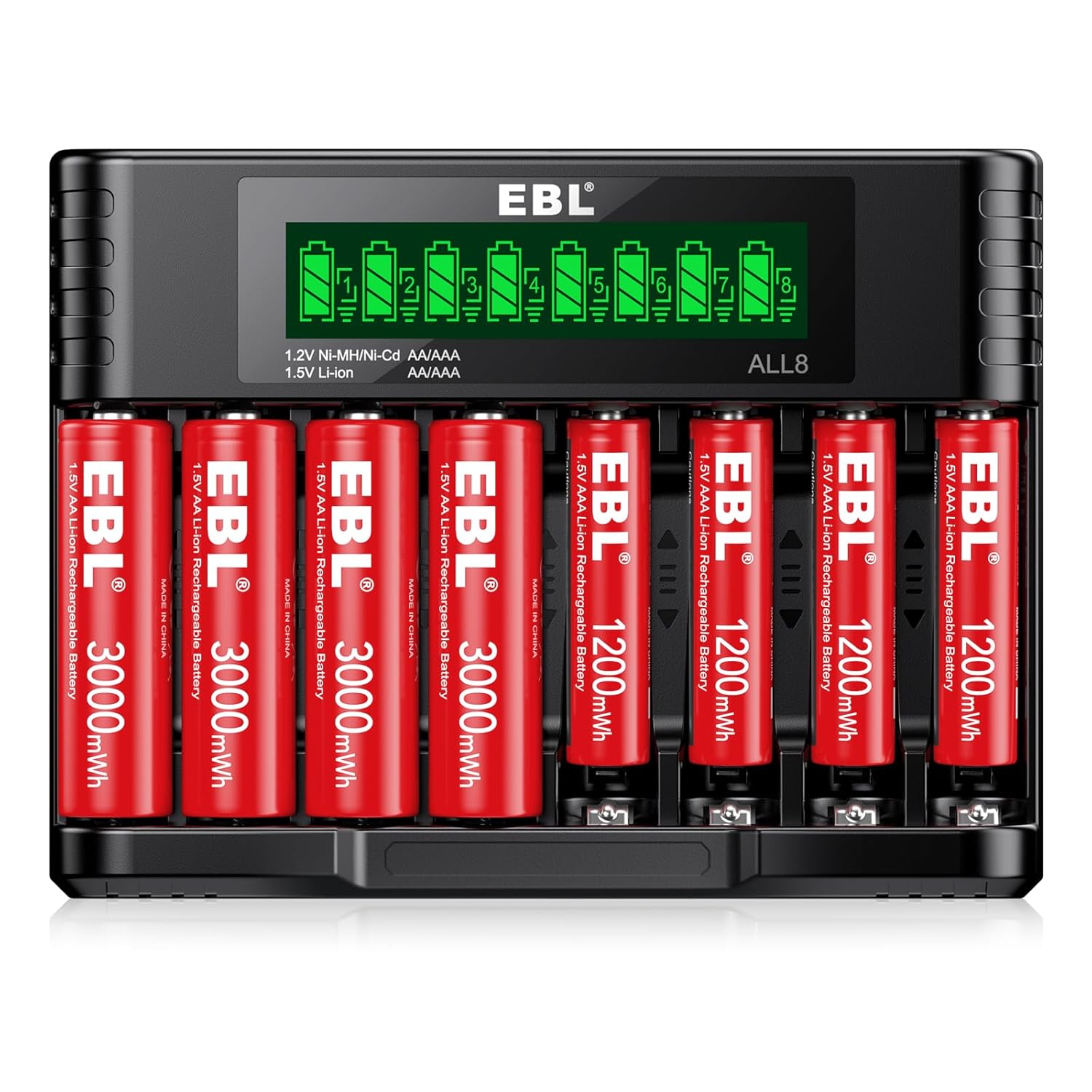
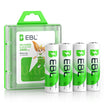
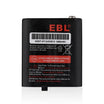
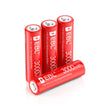
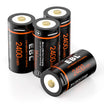
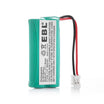
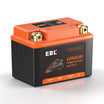
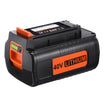

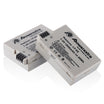
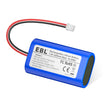
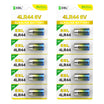
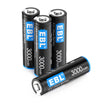
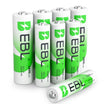
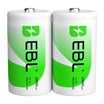
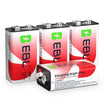

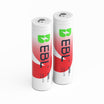
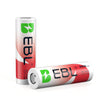
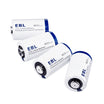
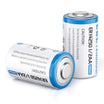
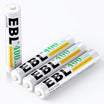
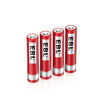
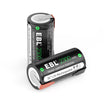
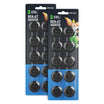
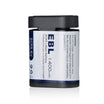
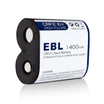
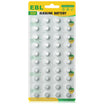
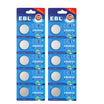
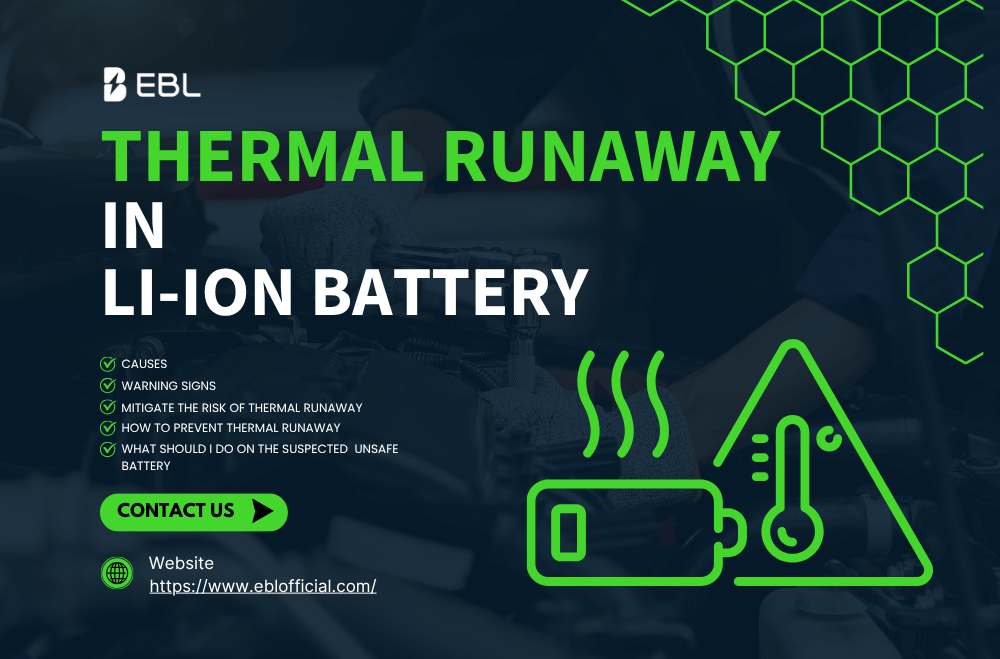
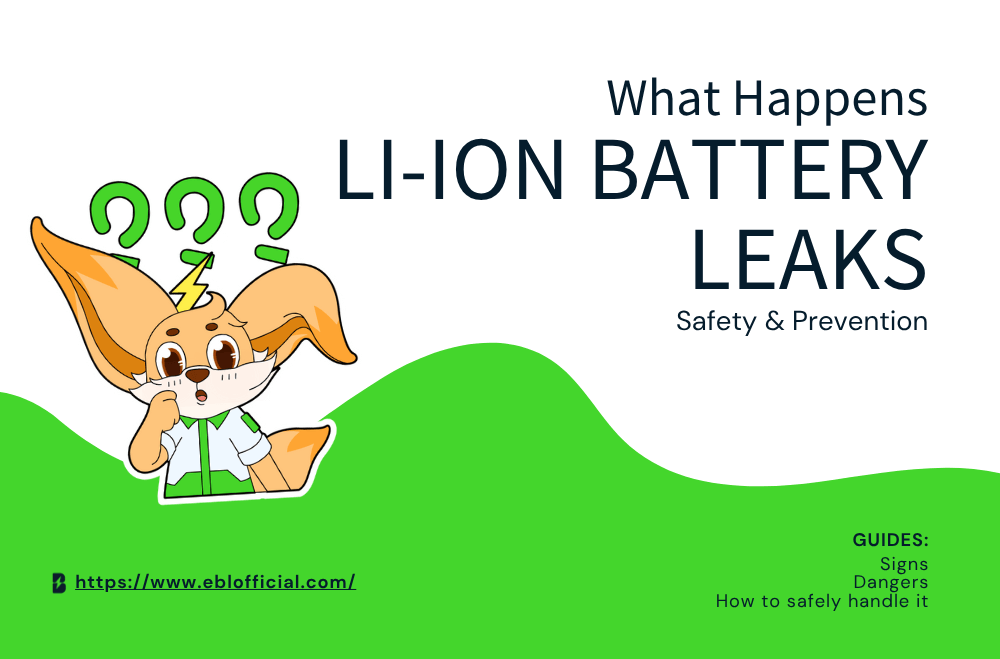
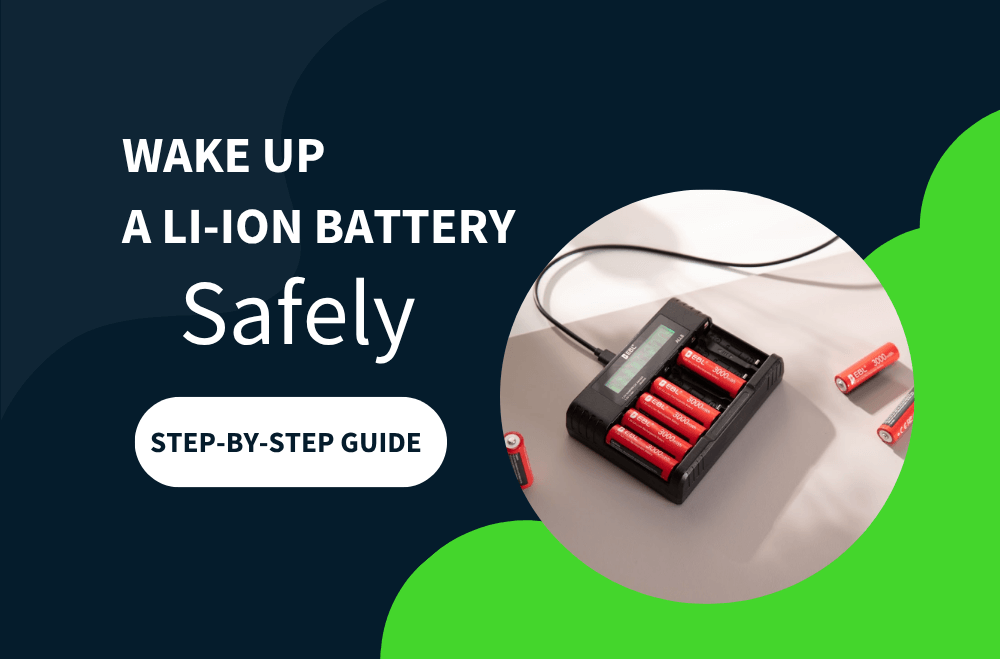

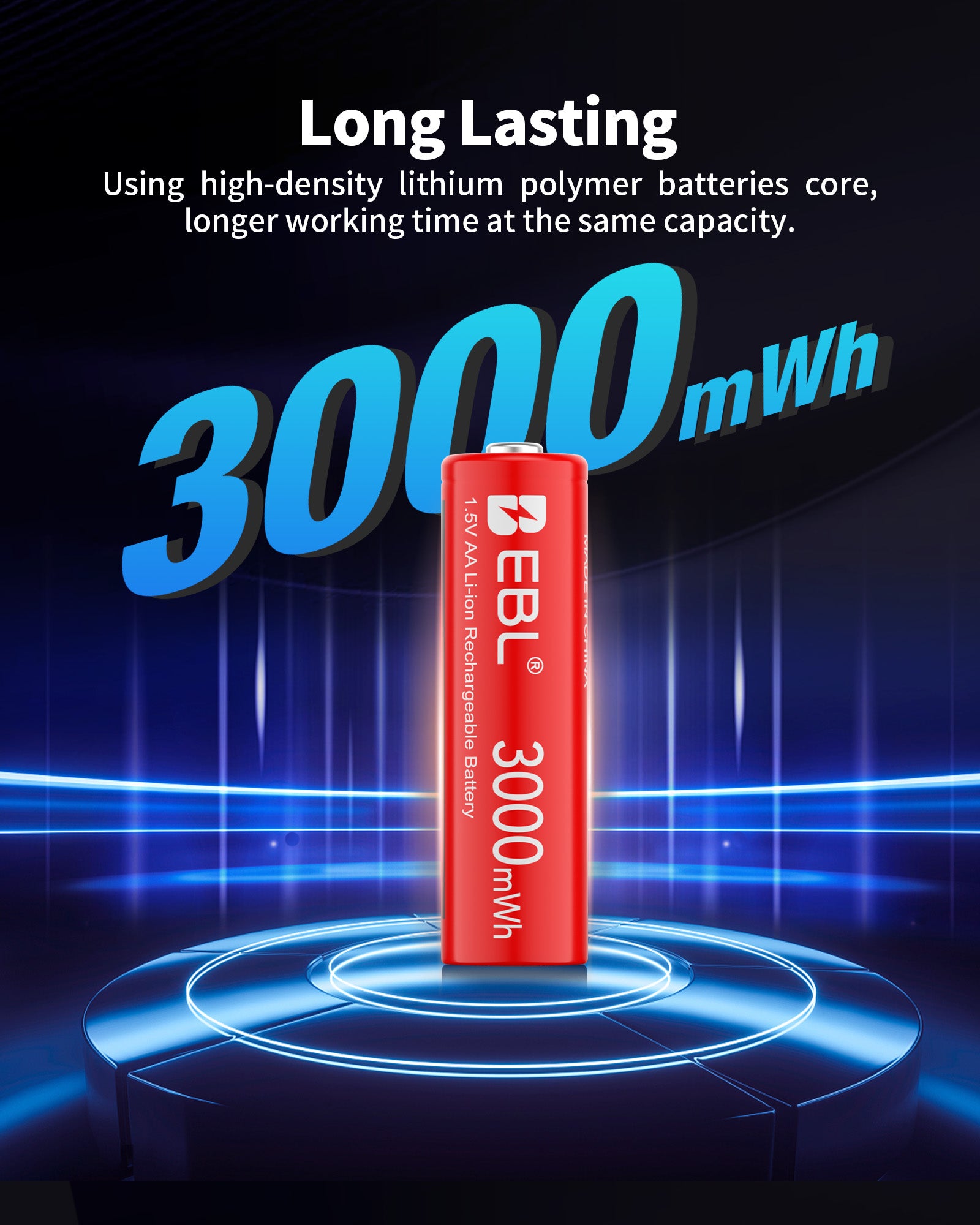
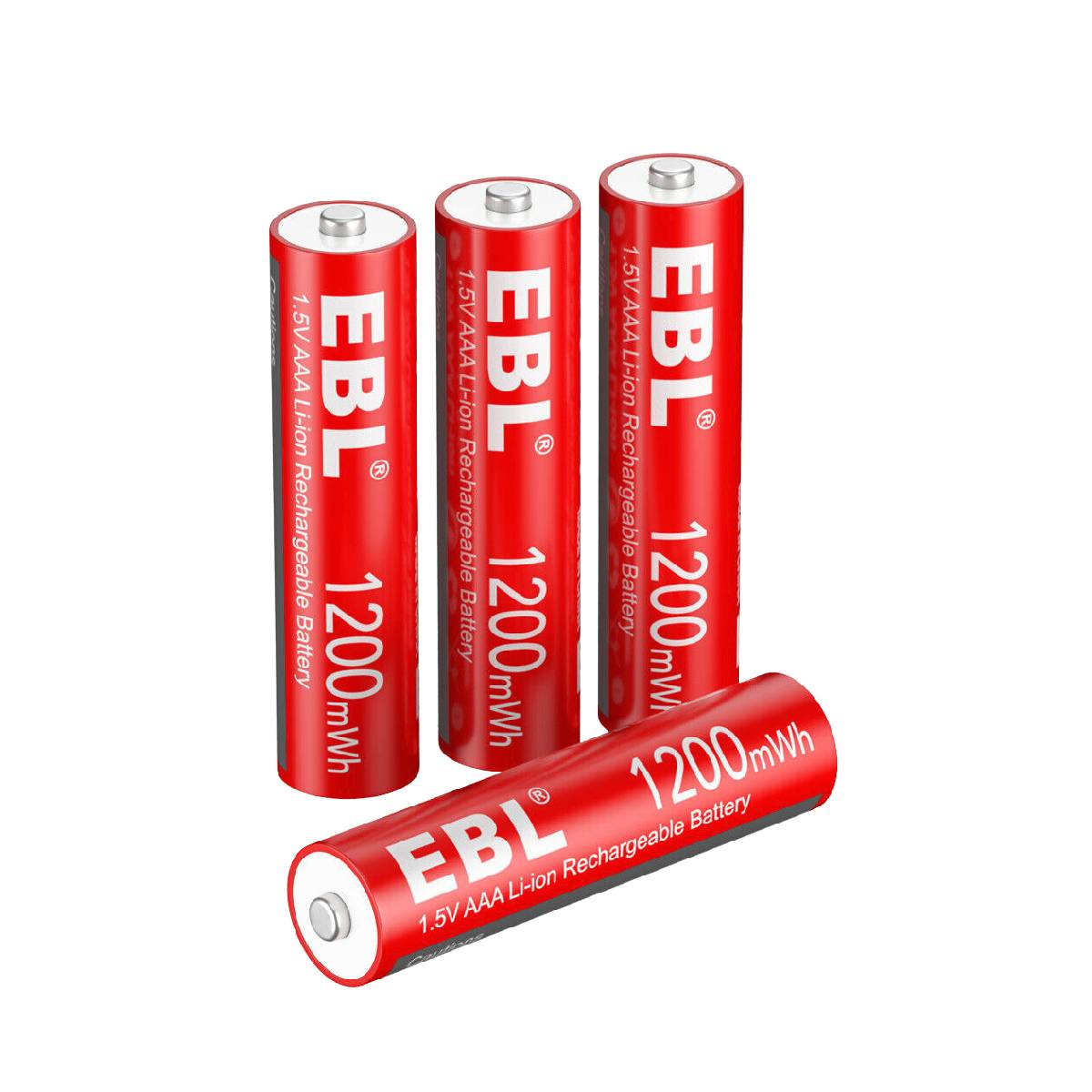
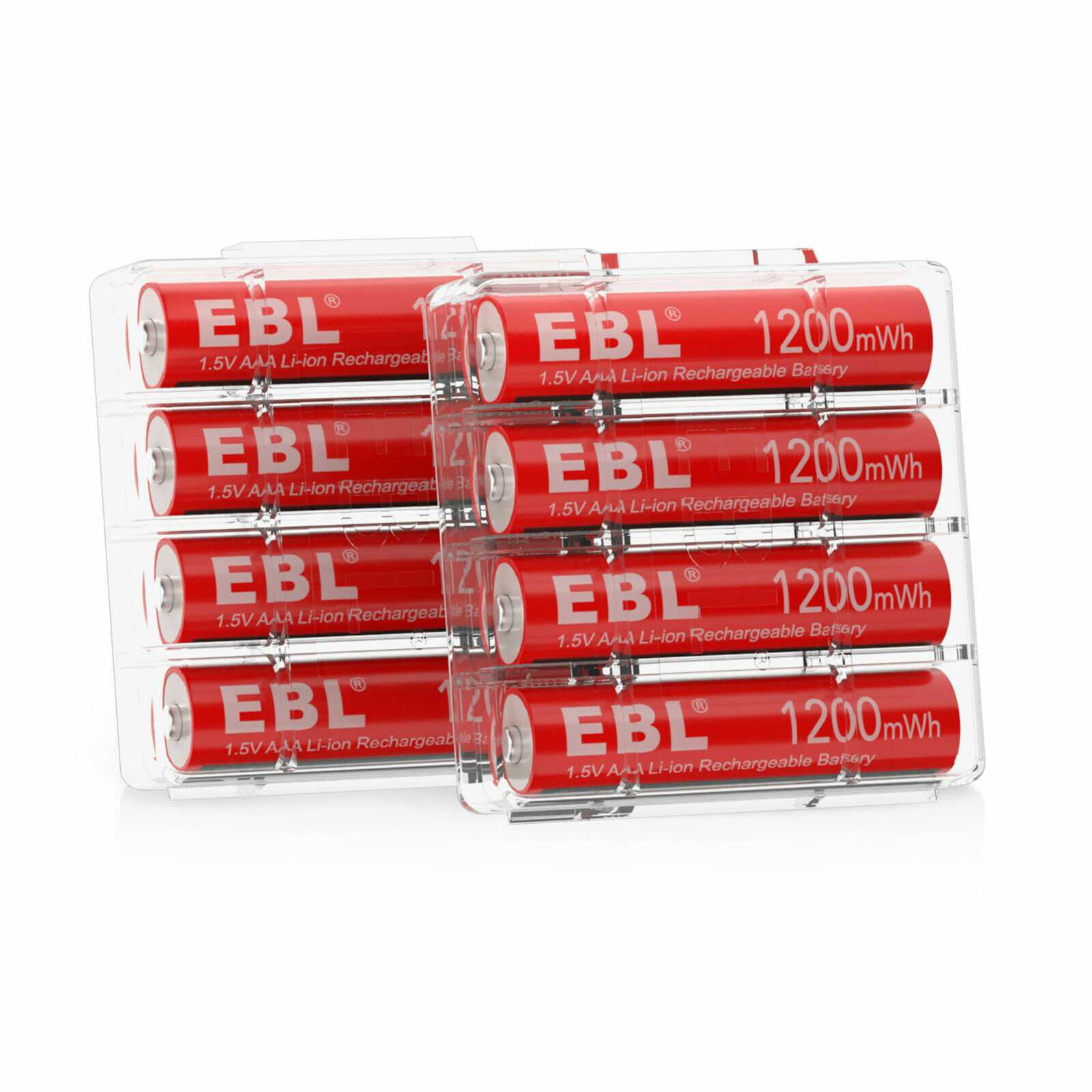
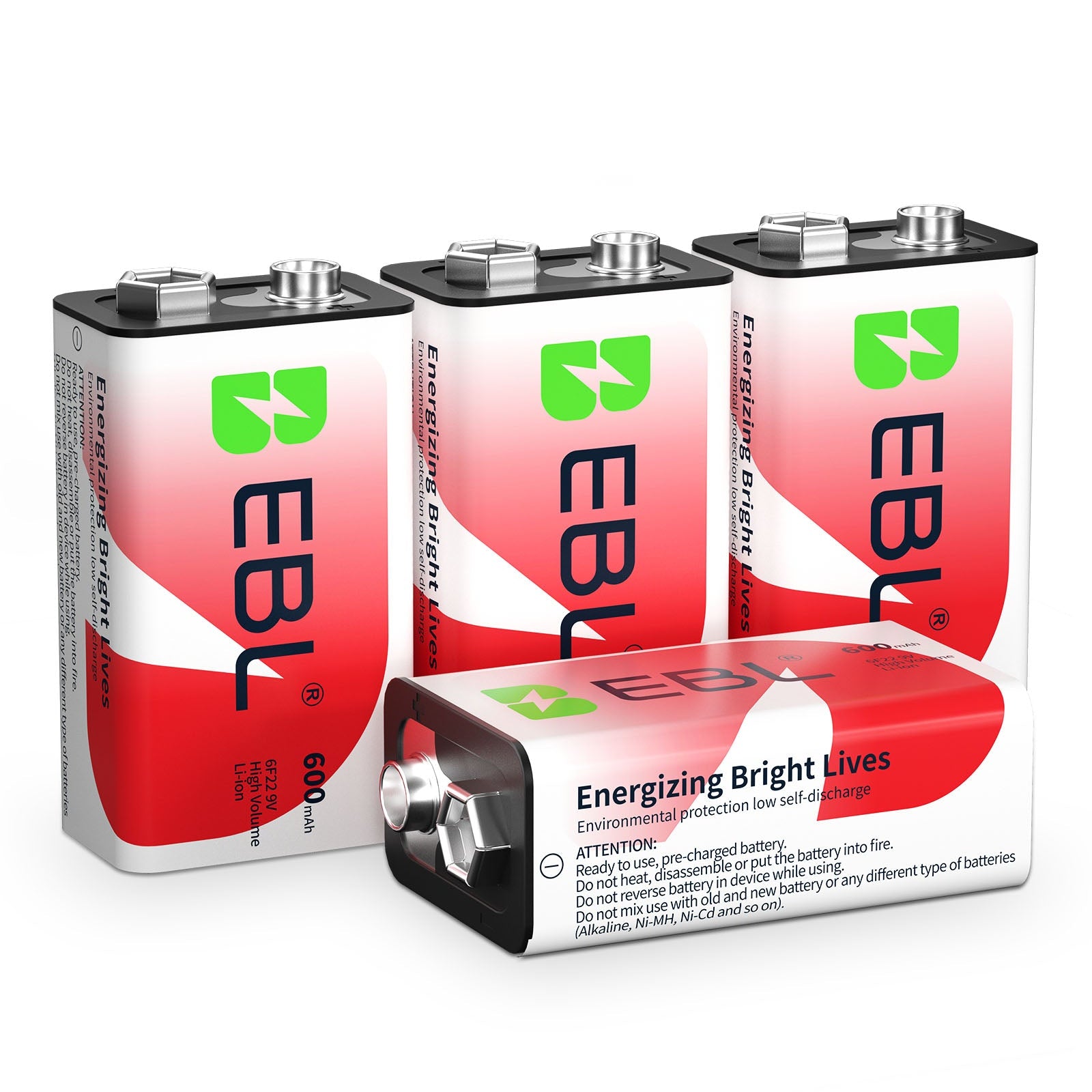
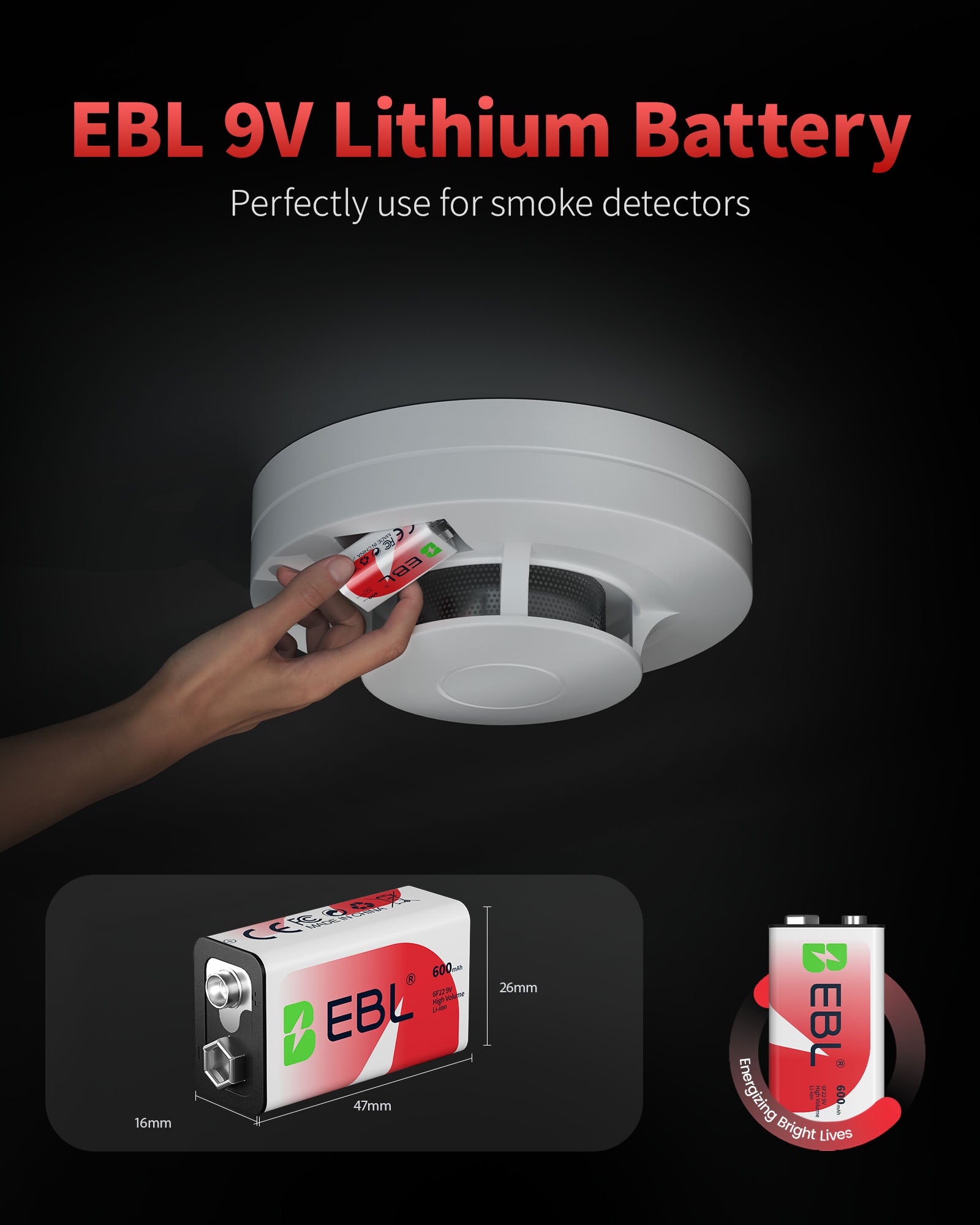
Dejar un comentario
Todos los comentarios se revisan antes de su publicación.
Este sitio está protegido por hCaptcha y se aplican la Política de privacidad de hCaptcha y los Términos del servicio.